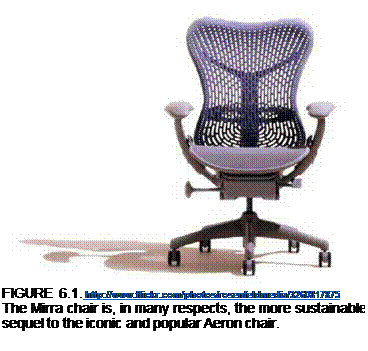 226
226
233
234
225
Enter code DITPDE for 15% off any Rosenfeld Media product directly
purchased from our site: http:Zrosenfeldmedia. com
|
D |
esigners can have a tremendous impact on the type and quality of materials used in products since they regularly specify materials in order to realize their designs. Often, more sustainable materials can be substituted for less sustainable or even toxic ones without much disruption in the manufacturing process. Sometimes, these materials can also lead to energy, resource, and time savings, as well as reduced liability and risk. However, not all materials can be replaced, particularly in electronic components. Also, different materials will have differing performance and may introduce new issues that affect quality, reliability, and manufacturing. So designers need to work closely with engineers and others in the manufacturing process to be sure that their choices are making improvements everywhere and not merely passing problems from one area to another.
Material Substitution
Material substitution can take many forms and be accomplished in a variety of ways, including the following:
• Substitute reused and recycled materials instead of virgin materials.
• Specify materials that are inexpensive to reuse, recycle, or dispose of and for which there are already systems or networks to do so.
• Use degradable and biodegradable materials where possible, but be wary that these may not degrade as fast or as intended.
• Substitute more sustainable raw materials from more local sources.
• Substitute energy used in manufacturing, distribution, and disposal processes from more renewable sources.
• Substitute water used from more sustainable sources or materials that use less water in their preparation.
• Investigate new and innovative materials and manufacturing processes that may be more efficient and sustainable.[47]
• Avoid laminate films and materials that cannot be separated easily.
• Avoid materials that create monstrous hybrids, combining materials from biological and non-biological sources that prevent recycling.
• Substitute locally available materials and supplies for refilling and reuse to reduce transportation impact.
All materials have different impacts, and it’s up to designers to both familiarize themselves with the possibilities and make better choices based on the needs of their solutions, as shown in Table 6.1.
|
TABLE 6.1
Tellus Institute 1992 |
 |
The Mirra chair (see Figure 6.1), by Herman Miller, is an example of rethinking a product’s design around environmental criteria. The inspiration for the Mirra was the success of the Aeron, the (now) ubiquitous chair from the Web boom era. While the Aeron was popular for its ergonomic comfort, its low use of material (compared to traditional, padded executive chairs), and its many adjustments, it
was very expensive to build, had many parts, and created a great deal of waste materials in manufacturing. The Mirra is an attempt to keep the popular features of the Aeron while making it a more sustainable alternative. Not only is it 15 percent less costly to build, but its sales quickly surpassed that of the Aeron.
The designers of the Mirra, Studio 7.5 in Berlin and Herman Miller in Michigan, selected materials with an eye to the manufacturing process and designed the construction to use as few parts as possible. The result is a chair that is easily disassembled, uses parts made from 42 percent recycled materials, is 96 percent recyclable, and is even less expensive than the Aeron. Some parts of the chair, such as the back panel, are 100 percent recyclable. Instead of traditional form and fabric, the Mirra uses a natural spring seat of elastomer and a back panel of molded polymer. The designers were also
able to substitute nylon for PVC in the cable jacket, and in conjunction with suppliers, specify recycled content in the steel parts. In addition to the material focus, the Mirra is designed to be produced more easily, and at the same time, the simplified production process makes it also easier to both assemble and disassemble.
The Mirra chair is certified at the Gold level of the Cradle to Cradle certification, and Herman Miller is one of the few companies to publish environmental impact reports for all of its products: www. hermanmiller. com/CDA/SSA/ Category/0,1564Ja10-c651J00.html. In addition, all new products developed by Herman Miller go through the Cradle to Cradle process.
